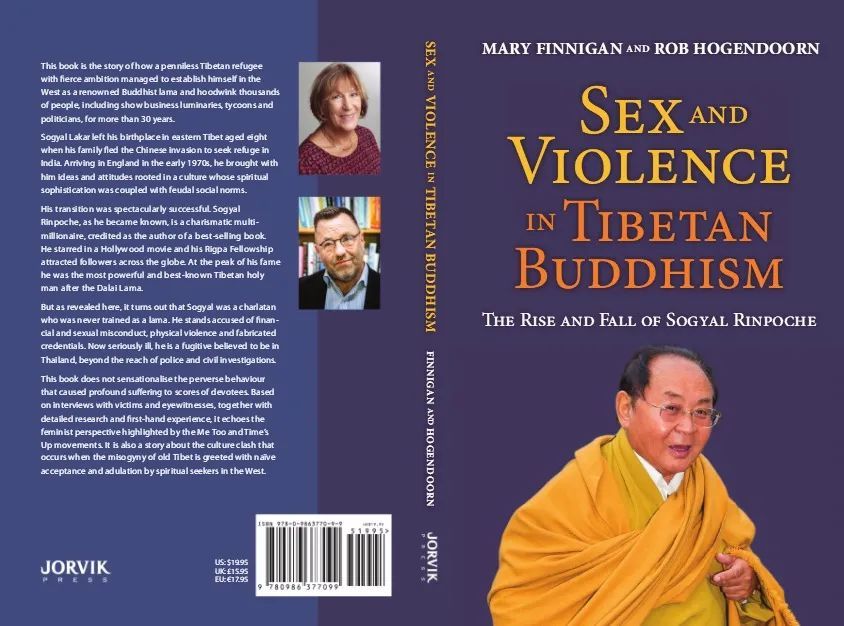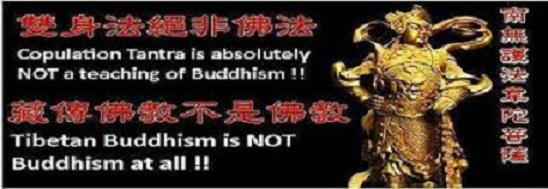»Die Dalai Lamas werden von ihren Anhängern als fortgeschrittene Mahayana Bodhisattvas angesehen, mitfühlende Wesen, die sozusagen ihren eigenen
Eintritt in das Nirvana zurückgestellt haben, um der leidenden Menschheit zu
helfen.
Sie sind demnach auf einem guten Wege zur Buddhaschaft, sie entwickeln
Perfektion in ihrer Weisheit und ihrem Mitgefühl zum Wohle aller Wesen.
Dies rechtertigt, in Form einer Doktrin, die soziopolitische Mitwirkung der
Dalai Lamas, als Ausdruck des mitfühlenden Wunsches eines Bodhisattvas,
anderen zu helfen.«
?Hier sollten wir zwei Dinge feststellen, die der Dalai Lama nicht ist:
Erstens, er ist nicht in einem einfachen Sinne ein ?Gott-König?. Er mag eine
Art König sein, aber er ist kein Gott für den Buddhismus.
Zweitens, ist der Dalai Lama nicht das ?Oberhaupt des Tibetischen
Buddhismus? als Ganzes. Es gibt zahlreiche Traditionen im Buddhismus. Manche
haben ein Oberhaupt benannt, andere nicht. Auch innerhalb Tibets gibt es
mehrere Traditionen. Das Oberhaupt der Geluk Tradition ist der Abt des Ganden
Klosters, als Nachfolger von Tsong kha pa, dem Begründer der Geluk Tradition
im vierzehnten/fünfzehnten Jahrhundert.«
Paul Williams, »Dalai Lama«, in
Clarke, P. B., Encyclopedia of New Religious Movements
(New York: Routledge, 2006), S. 136.
?Nur wenige der 14 Dalai Lamas regierten Tibet und wenn, dann meist nur für einige wenige Jahre.?
(Brauen 2005:6)
»In der Realität dürften insgesamt kaum mehr als fünfundvierzig Jahre der uneingeschränkten Regierungsgewalt der Dalai Lamas zusammenkommen. Die Dalai Lamas sechs und neun bis zwölf regierten gar nicht, die letzten vier, weil keiner von ihnen das regierungsfähige Alter erreichte. Der siebte Dalai Lama regierte uneingeschränkt nur drei Jahre und der achte überhaupt nur widerwillig und auch das phasenweise nicht allein. Lediglich der fünfte und der dreizehnte Dalai Lama können eine nennenswerte Regieruagsbeteiligung oder Alleinregierung vorweisen. Zwischen 1750 und 1950 gab es nur achtunddreißig Jahre, in denen kein Regent regierte!«
Jan-Ulrich Sobisch,
Lamakratie - Das Scheitern einer Regierungsform (PDF), S. 182,
Universität Hamburg

?Der fünfte Dalai Lama, der in der tibetischen Geschichte einfach ?Der Gro?e Fünfte? genannt wird, ist bekannt als der Führer, dem es 1642 gelang, Tibet nach einem grausamen Bürgerkrieg zu vereinigen. Die ?ra des fünften Dalai Lama (in etwa von seiner Einsetzung als Herrscher von Tibet bis zum Beginn des 18. Jahrhunderts, als seiner Regierung die Kontrolle über das Land zu entgleiten begann) gilt als pr?gender Zeitabschnitt bei der Herausbildung einer nationalen tibetischen Identit?t - eine Identit?t, die sich im Wesentlichen auf den Dalai Lama, den Potala-Palast der Dalai Lamas und die heiligen Tempel von Lhasa stützt. In dieser Zeit wandelte sich der Dalai Lama von einer Reinkarnation unter vielen, wie sie mit den verschiedenen buddhistischen Schulen assoziiert waren, zum wichtigsten Beschützer seines Landes. So bemerkte 1646 ein Schriftsteller, dass dank der guten Werke des fünften Dalai Lama ganz Tibet jetzt ?unter dem wohlwollenden Schutz eines wei?en Sonnenschirms zentriert? sei; und 1698 konstatierte ein anderer Schriftsteller, die Regierung des Dalai Lama diene dem Wohl Tibets ganz so wie ein Bodhisattva - der heilige Held des Mahayana Buddhismus - dem Wohl der gesamten Menschheit diene.?
Kurtis R. Schaeffer, »Der Fünfte Dalai Lama Ngawang Lobsang Gyatso«, in
DIE DALAI LAMAS: Tibets Reinkarnation des Bodhisattva Avalokite?vara,
ARNOLDSCHE Art Publishers,
Martin Brauen (Hrsg.), 2005, S. 65
?Gem?? der meisten Quellen war der [5.] Dalai Lama nach den Ma?st?ben seiner Zeit ein recht toleranter und gütiger Herrscher.?
Paul Williams, »Dalai Lama«, in
(Clarke, 2006, S. 136)
?Rückblickend erscheint Lobsang Gyatso, der ?Gro?e Fünfte?, dem Betrachter als überragende, allerdings auch als widersprüchliche Gestalt.?
Karl-Heinz Golzio / Pietro Bandini,
»Die vierzehn Wiedergeburten des Dalai Lama«,
O.W. Barth Verlag, 1997, S. 118
»Einmal an der Macht, zeigte er den anderen Schulen gegenüber beträchtliche Großzügigkeit. […] Ngawang Lobsang Gyatso wird von den Tibetern der ›Große Fünfte‹ genannt, und ohne jeden Zweifel war er ein ungewöhnlich kluger, willensstarker und doch gleichzeitig großmütiger Herrscher.«
Per Kvaerne, »Aufstieg und Untergang einer klösterlichen Tradition«, in:
Berchert, Heinz; Gombrich, Richard (Hrsg.):
»Der Buddhismus. Geschichte und Gegenwart«,
München 2000, S. 320
?Viele Tibeter gedenken insbesondere des V. Dalai Lama bis heute mit tiefer Ehrfurcht, die nicht allein religi?s, sondern mehr noch patriotisch begründet ist: Durch gro?es diplomatisches Geschick, allerdings auch durch nicht immer skrupul?sen Einsatz machtpolitischer und selbst milit?rischer Mittel gelang es Ngawang Lobzang Gyatso, dem ?Gro?en Fünften?, Tibet nach Jahrhunderten des Niedergangs wieder zu einen und in den Rang einer bedeutenden Regionalmacht zurückzuführen. Als erster Dalai Lama wurde er auch zum weltlichen Herrscher Tibets proklamiert. Unter seiner ?gide errang der Gelugpa-Orden endgültig die Vorherrschaft über die rivalisierenden lamaistischen Schulen, die teilweise durch blutigen Bürgerkrieg und inquisitorische Verfolgung unterworfen oder au?er Landes getrieben wurden.
Jedoch kehrte der Dalai Lama in seiner zweiten Lebenshälfte, nach Festigung seiner Macht und des tibetischen Staates, zu einer Politik der Mäßigung und Toleranz zurück, die seinem Charakter eher entsprach als die drastischen Maßnahmen, durch die er zur Herrschaft gelangte. Denn Ngawang Lobzang Gyatso war nicht nur ein Machtpolitiker und überragender Staatsmann, sondern ebenso ein spiritueller Meister mit ausgeprägter Neigung zu tantrischer Magie und lebhaftem Interesse auch an den Lehren andere lamaistischer Orden. Zeitlebens empfing er, wie die meisten seiner Vorgänger, gebieterische Gesichte, die er gegen Ende seines Lebens in seinen ›Geheimen Visionen‹ niederlegte.«
(Golzio, Bandini 1997: 95)

?Ein anderer, besonders wichtiger Dalai Lama war der Dreizehnte (1876-1933).
Als starker Herrscher versuchte er, im Allgemeinen ohne Erfolg, Tibet zu
modernisieren.
?Der gro?e Dreizehnte? nutzte den Vorteil des schwindenden Einflusses China
im 1911 beginnenden Kollaps dessen Monarchie, um faktisch der vollst?ndigen
nationalen Unabh?ngigkeit Tibets von China Geltung zu verschaffen. Ein Fakt,
den die Tibeter von jeher als Tatsache erachtet haben.?
Paul Williams, »Dalai Lama«, in
(Clarke, 2006, S. 137)
?Manche m?gen sich vielleicht fragen, wie die Herrschaft des Dalai Lama im Vergleich mit europ?ischen oder amerikanischen Regierungschefs einzusch?tzen ist. Doch ein solcher Vergleich w?re nicht gerecht, es sei denn, man geht mehrere hundert Jahre in der europ?ischen Geschichte zurück, als Europa sich in demselben Zustand feudaler Herrschaft befand, wie es in Tibet heutzutage der Fall ist. Ganz sicher w?ren die Tibeter nicht glücklich, wenn sie auf dieselbe Art regiert würden wie die Menschen in England; und man kann wahrscheinlich zu Recht behaupten, dass sie im Gro?en und Ganzen glücklicher sind als die V?lker Europas oder Amerikas unter ihren Regierungen. Mit der Zeit werden gro?e Ver?nderungen kommen; aber wenn sie nicht langsam vonstatten gehen und die Menschen nicht bereit sind, sich anzupassen, dann werden sie gro?e Unzufriedenheit verursachen. Unterdessen l?uft die allgemeine Verwaltung Tibets in geordneteren Bahnen als die Verwaltung Chinas; der tibetische Lebensstandard ist h?her als der chinesische oder indische; und der Status der Frauen ist in Tibet besser als in beiden genannten L?ndern.?
Sir Charles Bell, »Der Große Dreizehnte:
Das unbekannte Leben des XIII. Dalai Lama von Tibet«,
Bastei Lübbe, 2005, S. 546
?War der Dalai Lama im Gro?en und Ganzen ein guter Herrscher? Dies k?nnen wir mit Sicherheit bejahen, auf der geistlichen ebenso wie auf der weltlichen Seite. Was erstere betrifft, so hatte er die komplizierte Struktur des tibetischen Buddhismus schon als kleiner Junge mit ungeheurem Eifer studiert und eine au?ergew?hnliche Gelehrsamkeit erreicht. Er verlangte eine strengere Befolgung der m?nchischen Regeln, veranlasste die M?nche, ihren Studien weiter nachzugehen, bek?mpfte die Gier, Faulheit und Korruption unter ihnen und verminderte ihren Einfluss auf die Politik. So weit wie m?glich kümmerte er sich um die zahllosen religi?sen Bauwerke. In summa ist ganz sicher festzuhalten, dass er die Spiritualit?t des tibetischen Buddhismus vergr??ert hat.
Auf der weltlichen Seite stärkte er Recht und Gesetz, trat in engere Verbindung mit dem Volk, führte humanere Grundsätze in Verwaltung und Justiz ein und, wie oben bereits gesagt, verringerte die klösterliche Vorherrschaft in weltlichen Angelegenheiten. In der Hoffnung, damit einer chinesischen Invasion vorbeugen zu können, baute er gegen den Widerstand der Klöster eine Armee auf; vor seiner Herrschaft gab es praktisch keine Armee. In Anbetracht der sehr angespannten tibetischen Staatsfinanzen, des intensiven Widerstands der Klöster und anderer Schwierigkeiten hätte er kaum weiter gehen können, als er es tat.
Im Verlauf seiner Regierung beendete der Dalai Lama die chinesische Vorherrschaft in dem großen Teil Tibets, den er beherrschte, indem er chinesische Soldaten und Beamte daraus verbannte. Dieser Teil Tibets wurde zu einem vollkommen unabhängigen Königreich und blieb dies auch während der letzten 20 Jahre seines Lebens.«
Sir Charles Bell in (Bell 2005: 546-47)

?Der jetzige vierzehnte Dalai Lama (Tenzin Gyatso) wurde 1935 geboren. Die
Chinesen besetzten Tibet in den frühen 1950er Jahren, der Dalai Lama verlie?
Tibet 1959.
Er lebt jetzt als Flüchtling in Dharamsala, Nordindien, wo er der
Tibetischen Regierung im Exil vorsteht.
Als gelehrte und charismatische Pers?nlichkeit, hat er aktiv die
Unabh?ngigkeit seines Landes von China vertreten.
Durch seine h?ufigen Reisen, Belehrungen und Bücher macht er den Buddhismus
bekannt, engagiert sich für den Weltfrieden sowie für die Erforschung von
Buddhismus und Wissenschaft.
Als Anwalt einer ?universellen Verantwortung und eines guten Herzens?,
erhielt er den Nobelpreis im Jahre 1989.?
Paul Williams, »Dalai Lama«, in
(Clarke, 2006, S. 137)
Für Sobisch ist die moralische Legitimation der Herrschaft Geistlicher ?außerordentlich zweifelhaft?. Er konstatiert:
?Es zeigte sich auch in Tibet, da? moralische Integrit?t nicht automatisch mit der Zugeh?rigkeit zu einer Gruppe von Menschen erlangt wird, sondern allein auf pers?nlichen Entscheidungen basiert. Vielleicht sind es ?hnliche überlegungen gewesen, die den derzeitigen, vierzehnten Dalai Lama dazu bewogen haben, mehrmals unmi?verst?ndlich zu erkl?ren, da? er bei einer Rückkehr in ein freies Tibet kein politische Amt mehr übernehmen werde. Dies ist, so meine ich, keine schlechte Nachricht. Denn dieser Dalai Lama hat bewiesen, da? man auch ohne ein international anerkanntes politisches Amt inne zu haben durch ein glaubhaft an ethischen Grunds?tzen ausgerichtetes beharrliches Wirken einen enormen Einfluss in der Welt ausüben kann.?
Jan-Ulrich Sobisch,
Lamakratie - Das Scheitern einer Regierungsform (PDF), S. 190,
Universität Hamburg
















